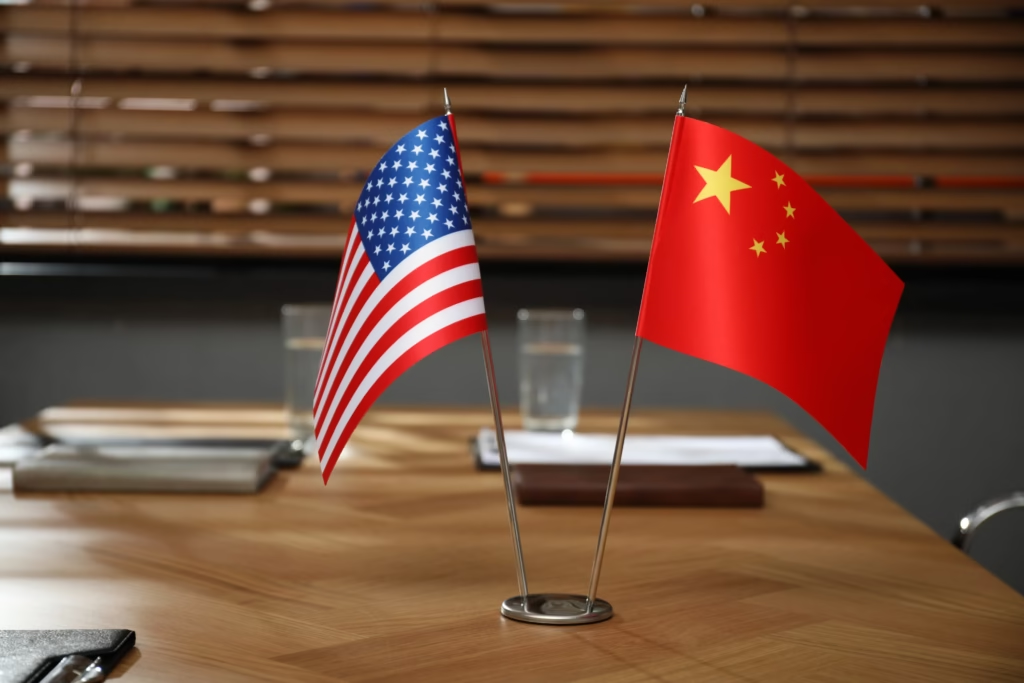US and China Slash Tariffs by 115% in Landmark Trade Deal: What It Means for the Global Economy

US and China
Introduction
US and China Trade Deal 2025 : In a groundbreaking development on May 12, 2025, the United States and China announced a mutual agreement to reduce tariffs by 115% over a 90-day period. This decision signifies a substantial de-escalation in the prolonged trade tensions between the world’s two largest economies. The agreement, reached during talks in Geneva, has been met with optimism by global markets and is poised to have far-reaching implications for international trade dynamics.
Background: The Escalation of Trade Tensions
The trade conflict between the US and China has been intensifying since 2018, with both nations imposing successive rounds of tariffs on each other’s goods. By early 2025, the US had levied tariffs as high as 145% on Chinese imports, while China responded with tariffs up to 125% on American products. These measures disrupted global supply chains, increased costs for consumers and businesses, and contributed to economic uncertainty worldwide.

The Geneva Agreement: Key Highlights
- Tariff Reductions: Effective May 14, 2025, the US will lower its tariffs on Chinese goods from 145% to 30%, while China will reduce its tariffs on US goods from 125% to 10%.
- Duration: The tariff reductions are set for a 90-day period, providing a window for further negotiations aimed at resolving underlying trade disputes.
- Establishment of Consultation Mechanism: Both countries have agreed to develop a new consultation mechanism to facilitate ongoing dialogue and prevent future escalations.
Market Reactions: A Surge in Optimism
The announcement of the tariff reductions has had an immediate positive impact on global financial markets:
- Stock Markets: US futures rose over 2%, Hong Kong’s Hang Seng index climbed nearly 3%, and European benchmarks in Germany and France increased by 0.7%.
- Commodity Prices: Prices for oil and iron ore have surged, reflecting increased optimism about global economic stability.
- Currency Markets: The US dollar strengthened, while the pound and euro weakened in response to the agreement.
Implications for Global Trade
The reduction in tariffs between the US and China is expected to have several significant effects:
- Revitalization of Trade Flows: Lower tariffs are likely to stimulate trade between the two nations, benefiting exporters and importers on both sides.
- Supply Chain Stabilization: The easing of trade tensions may lead to more stable and predictable supply chains, encouraging investment and long-term planning.
- Global Economic Growth: Improved US and China trade relations can contribute to global economic growth by reducing uncertainty and fostering a more favorable environment for international commerce.

Challenges and Considerations
While the agreement marks a positive step, several challenges remain:
- Temporary Nature of the Deal: The 90-day duration means that the underlying issues must be addressed promptly to avoid a resurgence of tensions.
- Sector-Specific Disputes: Certain sectors, such as technology and pharmaceuticals, may continue to face trade barriers and require separate negotiations.
- Geopolitical Factors: Broader geopolitical dynamics, including concerns over national security and technological competition, could influence the sustainability of the agreement.
Future Outlook: Toward a Comprehensive Trade Agreement
The current agreement provides a foundation for more comprehensive negotiations aimed at resolving longstanding trade disputes. Both nations have expressed a commitment to constructive dialogue, and the establishment of a consultation mechanism is a positive sign. However, achieving a lasting resolution will require addressing complex issues such as intellectual property rights, market access, and regulatory standards.
Conclusion of US and China
The US-China agreement to reduce tariffs by 115% over a 90-day period represents a significant de-escalation in trade tensions and offers a window of opportunity for more comprehensive negotiations. While challenges remain, the positive market reactions and mutual commitments to dialogue suggest a potential path forward toward more stable and cooperative economic relations between the two nations.




